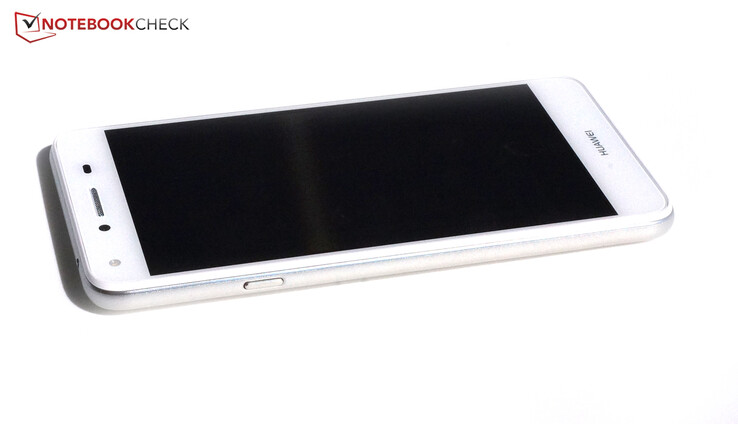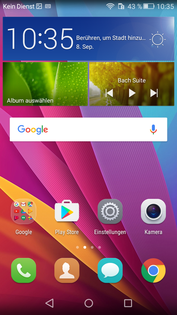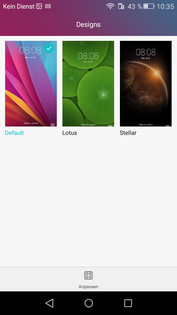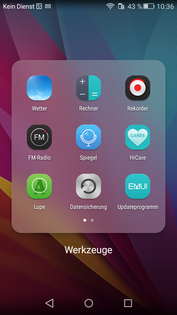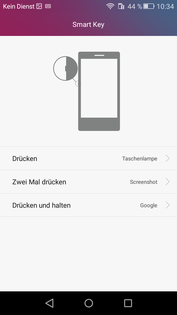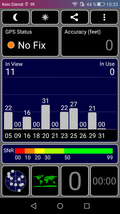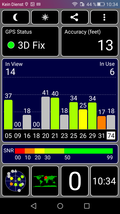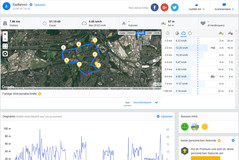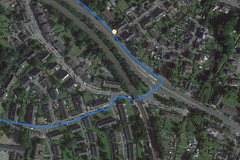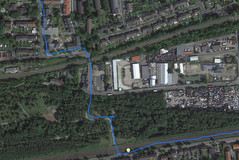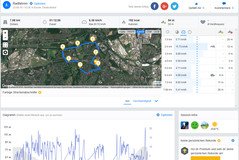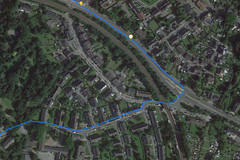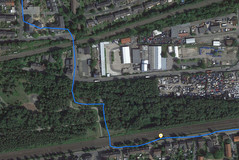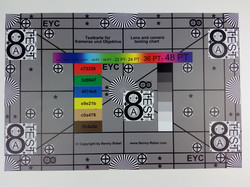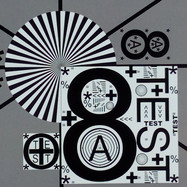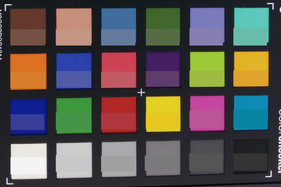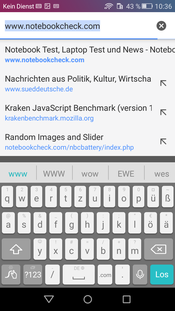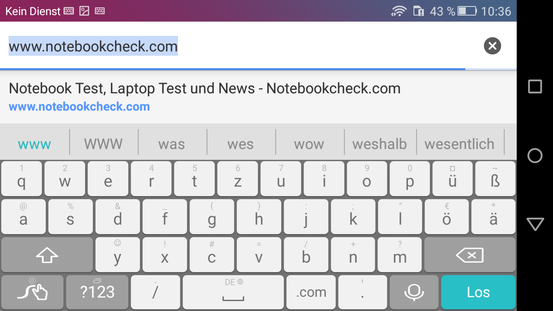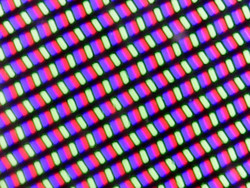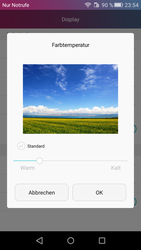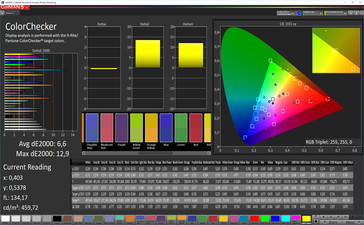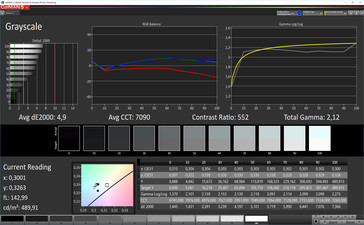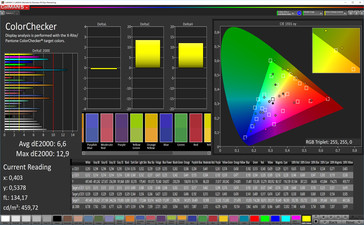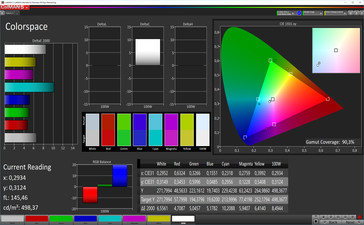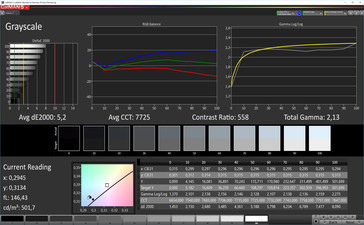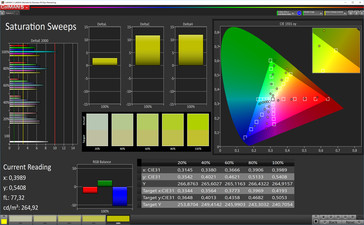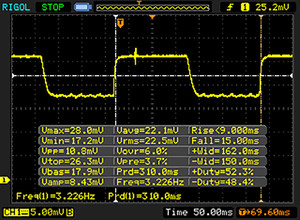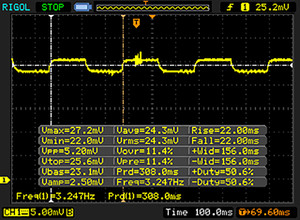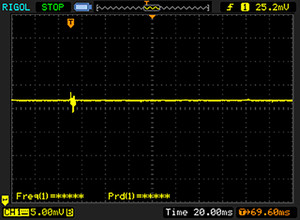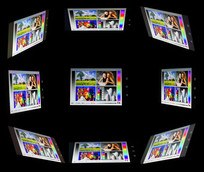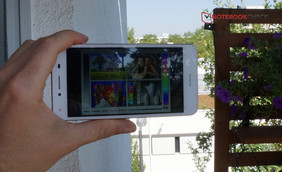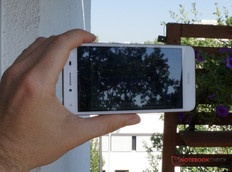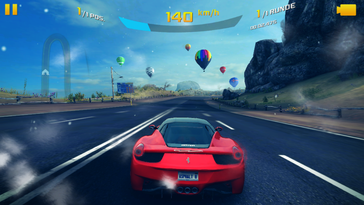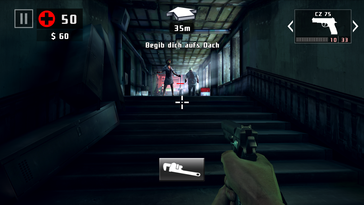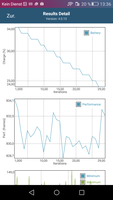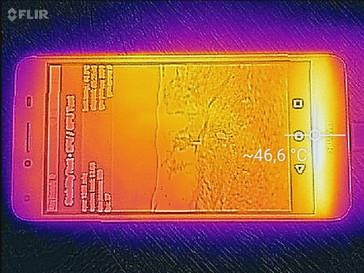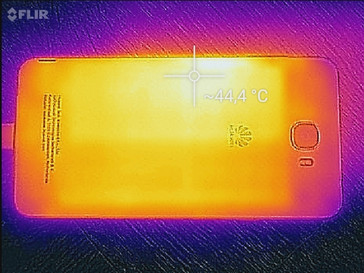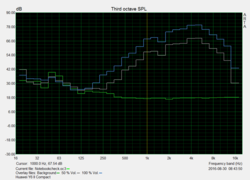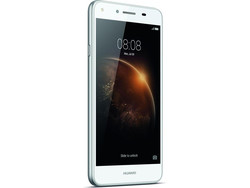Huawei Y6 II Compact Smartphone Review
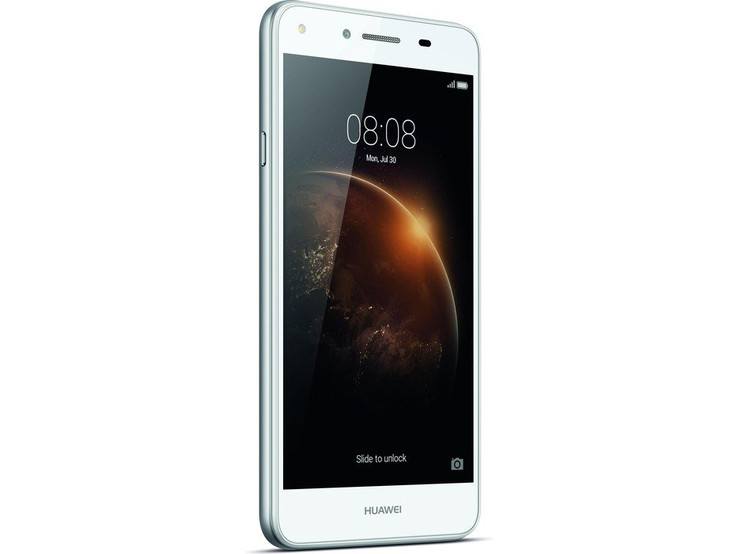
For the original German review, see here.
Entry-level and mid-range meet at approximately 200 Euros (~$255) on the smartphone market. The smartphones are already configured with a bit more storage, an HD or sometimes even Full HD screen, and they are usually bigger than 5 inches. Decent performance rates that allow smoothly navigating through the menu and most apps can also be expected for just below 200 Euros.
Huawei wants to be a match for other devices that once cost around 200 Euros, though now these cost about the same as an undiscounted Y6 II Compact. The buyer has the option of the larger Huawei Y6 II with a 5.5-inch screen and a bit more power for almost 200 Euros (~$255).
Huawei's Y6 II Compact dual-SIM smartphone is presently available for just below 160 Euros (~$180). That is very cheap; LG's K10 is currently found in a similar range. HTC's Desire 530, Samsung's Galaxy J3 (2016), and Honor's 5C by Huawei's subsidiary still range between 160 and 200 Euros (~$180 and $255).
Case
The casing of Huawei's Y6 II Compact is made of plastic. Buyers who want a metal casing will have to invest more - but not much: Honor's 5C features brushed aluminum for roughly 40 Euros (~$45) more. Our review sample's casing is pleasant to hold. All edges are curved; the back has a light texture and a classy feel.
The build is also decent: the removable back fits very flush in the casing, and the buttons hardly wobble. Relatively high pressure on the front is needed before it is passed to the liquid crystals, and the screen almost completely defies pressure on the back. It is possible to warp the handset slightly, and the removable back then produces quite a loud cracking noise.
Huawei's 140 gram (~5 oz) Y6 II Compact weighs just as much as HTC's Desire 530 and the slightly bigger LG K10. Subjectively, our review sample seems light but also high quality.
Connectivity
16 GB of storage and 2 GB of working memory place Huawei's Y6 II Compact at the upper end of this price range. Two micro-SIM ports are present; both slots support 4G but only one at a time. The other can only be used with 2G then. Conveniently, the user can select which slot is to support the 2G network and which one is to support all networks so that the SIM cards do not have to be swapped. It is also possible to choose which slot is to be normally used for mobile data and which slot for calls and SMS.
The USB port on the lower edge also supports connecting external storage devices (USB OTG). Devices in the same Wi-Fi network can communicate via Wi-Fi Direct and DLNA. NFC is not present, but an FM radio is installed.
Software
First reports have been confirmed: The Y6 II Compact is unfortunately based only on Android 5.1, which is the second-to-last Android version. Emotion UI version 3.1 covers it. An update to a newer version was not available at test time.
All bloatware and adware that Huawei preloads are found in the folder "Top Apps": The "WPS Office" software might still be useful, but many users will find apps for hotel reservations or Twitter superfluous.
At least some fairly useful apps, such as "HiCare" or a flashlight, are also preloaded.
Communication and GPS
It has become normal to offer at least basic LTE functionality in the lower mid-range. Huawei apparently agrees with this and furnishes its smartphone with the high-speed mobile network standard. The bandwidths B1/B3/B7/B8/B20 are supported, which should make it possible to cope quite well at least in Europe. A short practical test in an urban area resulted in decent reception rates indoors and good quality outdoors.
The Wi-Fi standards 802.11 b/g/n can be used, which excludes the 5 GHz network. We measured the Wi-Fi module's reception and transmission performance a meter (~3 ft) away from the Linksys EA8500 router. Honor's 5C managed slightly higher speed, but high-end devices like LG's G5 or Samsung's Galaxy S7 Edge offer considerably higher transmission rates thanks to 802.11 ac support.
We perceived the speed at which pages opened to be fast with full reception near the router. 3/4 of the signal was still displayed at a distance of ten meters (~33 feet) and through three walls. Although pages opened quickly, it was clearly slower.
| Networking | |
| iperf Server (receive) TCP 1 m | |
| LG G5 | |
| Samsung Galaxy S7 Edge | |
| Honor 5C | |
| Huawei Y6 II Compact | |
| iperf Client (transmit) TCP 1 m | |
| Samsung Galaxy S7 Edge | |
| LG G5 | |
| Honor 5C | |
| Huawei Y6 II Compact | |
The tracking module supports GPS and GLONASS. It could not locate us indoors, but localization was very fast with an accuracy of up to 4 meters (~13 ft) outdoors.
We put Huawei's Y6 II Compact alongside Garmin's Edge 500 professional navigation system in our backpack and took them on a bike trip to provide practical rates. The measured route deviated by 200 meters (~656 ft), which is quite an obvious aberration on an almost eight-kilometer (~5 mile) route.
While slight deviations from the route were seen in the crossing area, the Y6 II Compact placed us clearly off the route in the woods. Although Garmin's Edge 500 is not perfect here, it is considerably more accurate.
Telephone and Call Quality
Huawei uses its own phone app with a slightly different design than Google's stock app. The keypad and recent calls are displayed when the app is opened. Contacts and notifications can be accessed directly via tabs at the upper edge. Important contacts can be placed at the top of the list in the contact folder. This phone app is not really an improvement to Google's stock app; it simply displays things a bit differently. It can be used just as well, and thus the question arises why Huawei had to develop its own app at all costs when the Android app already functions very well?
The call quality is decent. We understood our contact well and the speaker does not produce static but it is relatively muffled. Our contact also perceived us a quite muffled. The microphone transmits the voice to the contact quite poorly when talking quietly.
Cameras
The rear-facing camera of Huawei's Y6 II Compact has a resolution of 13 megapixels, and an autofocus alongside a dual-LED flash support it. The camera's photos do not look as sharp as from high-quality cameras in bright ambient light. The autofocus seems to have some problems since it is virtually impossible to shoot sharp photos even in the dark without the flash. Then again, bright areas overexpose quickly. Colors have a visible yellowish tint.
Videos can be recorded at a maximum of 720p. The quality is quite decent, and the exposure adapts quickly when changing from bright to dark surroundings.
The front-facing camera has a resolution of 5 megapixels and an LED flash as a small special feature. Colors look very vivid and larger colored areas sometimes look spotty. Bright areas overexpose quickly, but dark areas are quite well furnished with details.
The camera in Huawei's Y6 II Compact does a better job in defined light conditions. The reference card that we photographed looks very sharp. Minor hazing is visible at the text edges in detail, but the autofocus really gets going in high contrasts and produce a very sharp photo. As expected, the color reproduction is extremely saturated.
Accessories and Warranty
Although its availability is good on the Internet, Huawei's Y6 II Compact is not found on Huawei's German website. This model is not even listed on Huawei's international page. An official supply of accessories does not exist, either. However, this is usually limited in this price range anyway.
A 24-month warranty is included.
Input Devices and Handling
Huawei Swype is the name of the keyboard that the smartphone uses. It provides relatively large keys and also very extensive setting options: starting with keyboard height over themes, inputting in two languages or vibrating while typing up to automatically entering a space - many things can be set. Voice recording and inputting by swiping over the keyboard are of course also integrated. Some user might find the keyboard perhaps a bit too stuffed since every key has a second assignment. Google's stock app makes a simpler and more clearly arranged impression.
The touchscreen is very sensitive into the corners; the user interface can be scaled down for one-hand use when necessary. Various gestures for controlling the smartphone, such as turn to mute or double tap to wake, are present. Letters can also be drawn on the disabled screen to open applications. Although it takes a moment before recognized, it functions quite reliably.
The Smart Key softkey is on the casing's left. Like the volume control and standby buttons, it also has a clear pressure point that is easily felt.
Display
Models with a 5-inch screen are considered compact today, and therefore a screen of this size is installed in Huawei's Y6 II Compact. It has the category-standard resolution of 1280x720 pixels, and it can get very bright with up to 503 cd/m². Its average brightness is 487 cd/m² - a really good rate that only Honor's 5C surpasses. It is also the only comparison model with a Full HD panel.
The illumination of the screen in our review sample is a very homogeneous 92 percent, and thus large surfaces are illuminated evenly.
| |||||||||||||||||||||||||
Brightness Distribution: 92 %
Center on Battery: 491 cd/m²
Contrast: 546:1 (Black: 0.9 cd/m²)
ΔE ColorChecker Calman: 6.6 | ∀{0.5-29.43 Ø4.77}
ΔE Greyscale Calman: 4.9 | ∀{0.09-98 Ø5}
Gamma: 2.12
CCT: 7090 K
| Huawei Y6 II Compact IPS, 1280x720, 5" | LG K10 IPS, 1280x720, 5.3" | HTC Desire 530 IPS, 1280x720, 5" | Honor 5C IPS, 1920x1080, 5.2" | Samsung Galaxy J3 2016 Super AMOLED, 1280x720, 5" | |
|---|---|---|---|---|---|
| Screen | 7% | 22% | 14% | -5% | |
| Brightness middle (cd/m²) | 491 | 370 -25% | 375 -24% | 515 5% | 295 -40% |
| Brightness (cd/m²) | 487 | 355 -27% | 376 -23% | 498 2% | 299 -39% |
| Brightness Distribution (%) | 92 | 92 0% | 91 -1% | 93 1% | 96 4% |
| Black Level * (cd/m²) | 0.9 | 0.28 69% | 0.32 64% | 0.49 46% | |
| Contrast (:1) | 546 | 1321 142% | 1172 115% | 1051 92% | |
| Colorchecker dE 2000 * | 6.6 | 6.7 -2% | 6 9% | 6.2 6% | 5.8 12% |
| Colorchecker dE 2000 max. * | 12.9 | 17.8 -38% | 9.5 26% | 11.4 12% | 8.6 33% |
| Greyscale dE 2000 * | 4.9 | 7.9 -61% | 4.5 8% | 7.4 -51% | 4.8 2% |
| Gamma | 2.12 104% | 2.21 100% | 2.26 97% | 2.28 96% | 1.84 120% |
| CCT | 7090 92% | 9072 72% | 6975 93% | 8664 75% | 6252 104% |
* ... smaller is better
Although Samsung's Galaxy J3 with its AMOLED panel is considerably brighter than our review sample, it also has a virtually infinitely high contrast ratio since it can reproduce absolute black. Huawei's Y6 II Compact cannot compete with that - the black value of 0.9 cd/m² is even quite high and the contrast ratio of 546:1 consequently also very low. This leads to a relatively pale picture on the screen.
A more detailed color reproduction analysis is possible using CalMAN software and a spectrophotometer. The color reproduction can be adapted to personal needs to a certain degree in the menu, under Display - color temperature. However, adapting the setting does not completely eliminate a minor bluish tint. Furthermore, the grayscale reproduction accuracy is only improved marginally. Colors still deviate quite strongly from the reference color space.
Display Response Times
| ↔ Response Time Black to White | ||
|---|---|---|
| 24 ms ... rise ↗ and fall ↘ combined | ↗ 9 ms rise | |
| ↘ 15 ms fall | ||
| The screen shows good response rates in our tests, but may be too slow for competitive gamers. In comparison, all tested devices range from 0.1 (minimum) to 240 (maximum) ms. » 53 % of all devices are better. This means that the measured response time is worse than the average of all tested devices (20.2 ms). | ||
| ↔ Response Time 50% Grey to 80% Grey | ||
| 44 ms ... rise ↗ and fall ↘ combined | ↗ 22 ms rise | |
| ↘ 22 ms fall | ||
| The screen shows slow response rates in our tests and will be unsatisfactory for gamers. In comparison, all tested devices range from 0.165 (minimum) to 636 (maximum) ms. » 73 % of all devices are better. This means that the measured response time is worse than the average of all tested devices (31.6 ms). | ||
Screen Flickering / PWM (Pulse-Width Modulation)
| Screen flickering / PWM not detected | |||
In comparison: 53 % of all tested devices do not use PWM to dim the display. If PWM was detected, an average of 8088 (minimum: 5 - maximum: 343500) Hz was measured. | |||
The viewing angles are very good thanks to the IPS technology. The image on the screen can still be recognized well even when looking from the side. Huawei's Y6 II Compact does a mediocre job outdoors. The high brightness faces the low contrast and glossy surface. Recognizing something on the screen also becomes difficult in the shade when the brightness is not set to maximum.
Performance
The four cores in MediaTek's MT6735 SoC in Huawei's Y6 II Compact clock at a maximum of 1.5 GHz. The now somewhat older mid-range SoC still allows navigating relatively smoothly through menus and apps, and its performance is perceivably higher than that of most rivals - with exception of Honor's 5C.
An ARM Mali-T720 MP2 graphics unit is installed, and it is also much stronger than the graphics units in equally priced handsets.
| AnTuTu v6 - Total Score (sort by value) | |
| Huawei Y6 II Compact | |
| LG K10 | |
| HTC Desire 530 | |
| Honor 5C | |
| Samsung Galaxy J3 2016 | |
| GFXBench (DX / GLBenchmark) 2.7 | |
| T-Rex Onscreen (sort by value) | |
| Huawei Y6 II Compact | |
| LG K10 | |
| HTC Desire 530 | |
| Honor 5C | |
| Samsung Galaxy J3 2016 | |
| 1920x1080 T-Rex Offscreen (sort by value) | |
| Huawei Y6 II Compact | |
| LG K10 | |
| HTC Desire 530 | |
| Honor 5C | |
| Samsung Galaxy J3 2016 | |
| GFXBench 3.0 | |
| on screen Manhattan Onscreen OGL (sort by value) | |
| Huawei Y6 II Compact | |
| LG K10 | |
| HTC Desire 530 | |
| Honor 5C | |
| 1920x1080 1080p Manhattan Offscreen (sort by value) | |
| Huawei Y6 II Compact | |
| LG K10 | |
| HTC Desire 530 | |
| Honor 5C | |
| GFXBench 3.1 | |
| on screen Manhattan ES 3.1 Onscreen (sort by value) | |
| Huawei Y6 II Compact | |
| LG K10 | |
| Honor 5C | |
| 1920x1080 Manhattan ES 3.1 Offscreen (sort by value) | |
| Huawei Y6 II Compact | |
| LG K10 | |
| Honor 5C | |
| PCMark for Android - Work performance score (sort by value) | |
| Huawei Y6 II Compact | |
| LG K10 | |
| HTC Desire 530 | |
| Honor 5C | |
| Samsung Galaxy J3 2016 | |
| Geekbench 4.0 | |
| 64 Bit Single-Core Score (sort by value) | |
| Huawei Y6 II Compact | |
| 64 Bit Multi-Core Score (sort by value) | |
| Huawei Y6 II Compact | |
| Compute RenderScript Score (sort by value) | |
| Huawei Y6 II Compact | |
Browsing the Internet is also a bit smoother with Huawei's Y6 II Compact than with equally priced comparison devices. It is not as important how fast the Internet connection is, but rather how fast the smartphone can process intricate web technologies, such as HTML5.
| Mozilla Kraken 1.1 - Total (sort by value) | |
| Huawei Y6 II Compact | |
| LG K10 | |
| HTC Desire 530 | |
| Honor 5C | |
| Samsung Galaxy J3 2016 | |
| Octane V2 - Total Score (sort by value) | |
| Huawei Y6 II Compact | |
| LG K10 | |
| HTC Desire 530 | |
| Honor 5C | |
| Samsung Galaxy J3 2016 | |
| WebXPRT 2015 - Overall (sort by value) | |
| Huawei Y6 II Compact | |
| LG K10 | |
| HTC Desire 530 | |
| Honor 5C | |
| Samsung Galaxy J3 2016 | |
| JetStream 1.1 - Total Score (sort by value) | |
| Huawei Y6 II Compact | |
| LG K10 | |
| HTC Desire 530 | |
| Honor 5C | |
| Samsung Galaxy J3 2016 | |
* ... smaller is better
Our review sample also accessed the internal storage quite fast. In particular, the read transfer rates are one big strength of Huawei's Y6 II Compact.
It does not look as good when accessing the micro-SD card. We test all mobile devices with our reference card - a very fast Toshiba Exceria Pro M401. Our present review sample scores very badly here: Writing on the card is performed at a speed of just 17.12 MB per second and read at just 31.57 MB per second. 80 MB per second in write and 95 MB per second in read would be possible with the card. Apps cannot be moved to the SD card.
| AndroBench 3-5 | |
| Sequential Read 256KB (sort by value) | |
| Huawei Y6 II Compact | |
| LG K10 | |
| HTC Desire 530 | |
| Honor 5C | |
| Samsung Galaxy J3 2016 | |
| Sequential Write 256KB (sort by value) | |
| Huawei Y6 II Compact | |
| LG K10 | |
| HTC Desire 530 | |
| Honor 5C | |
| Samsung Galaxy J3 2016 | |
| Random Read 4KB (sort by value) | |
| Huawei Y6 II Compact | |
| LG K10 | |
| HTC Desire 530 | |
| Honor 5C | |
| Samsung Galaxy J3 2016 | |
| Random Write 4KB (sort by value) | |
| Huawei Y6 II Compact | |
| LG K10 | |
| HTC Desire 530 | |
| Honor 5C | |
| Samsung Galaxy J3 2016 | |
| Sequential Read 256KB SDCard (sort by value) | |
| Huawei Y6 II Compact | |
| LG K10 | |
| HTC Desire 530 | |
| Honor 5C | |
| Samsung Galaxy J3 2016 | |
| Sequential Write 256KB SDCard (sort by value) | |
| Huawei Y6 II Compact | |
| LG K10 | |
| HTC Desire 530 | |
| Honor 5C | |
| Samsung Galaxy J3 2016 | |
Games
We tested the gaming suitability with the demanding 3D games "Asphalt 8: Airborne" and "Dead Trigger 2". Huawei's Y6 II Compact achieved a frame rate of roughly 30 FPS in both games, but only in very low settings in the racing game "Asphalt 8". The somewhat older SoC at least supports OpenGL ES 3.1. However, more state-of-the-art interfaces, such as OpenGL ES 3.2 or Vulkan, might prevent future high-end mobile games from running on Huawei's Y6 II Compact.
| Asphalt 8: Airborne | |||
| Settings | Value | ||
| high | 24 fps | ||
| very low | 30 fps | ||
| Dead Trigger 2 | |||
| Settings | Value | ||
| high | 29 fps | ||
Emissions
Temperature
The user will not have to worry about high performance losses during prolonged load in Huawei's Y6 II Compact. Relatively stable frame rates were recorded even after the thirtieth run of GFXBench's battery test. However, the review sample reached quite high temperatures: We measured up to 45 degrees Celsius (113 Fahrenheit) on the lower front, which is exactly where the user often touches the smartphone. We also measured clearly increased temperatures of up to 42.2 degrees (~108 Fahrenheit) on the back.
The temperatures were already increased in idle mode and reached up to 37.8 degrees (~100 Fahrenheit) on the front.
(±) The maximum temperature on the upper side is 45 °C / 113 F, compared to the average of 35.2 °C / 95 F, ranging from 21.9 to 247 °C for the class Smartphone.
(±) The bottom heats up to a maximum of 42.2 °C / 108 F, compared to the average of 34 °C / 93 F
(±) In idle usage, the average temperature for the upper side is 35 °C / 95 F, compared to the device average of 32.9 °C / 91 F.
Speakers
Our speaker analysis using the tool "Pink Noise" displays very little bass. We can confirm this after an audio test. In return, the high tones assault the ear and sometimes unpleasantly. Furthermore, the speaker sounds quieter than it actually is due to the lack of basses and mid-range. In total, not a very convincing sound presentation. At least the audio jack and Bluetooth deliver a static-free sound.
A headset is included. It is a relatively simple model that delivers an acceptable sound. The in-ear headset will not fit well in every ear - luck is needed here.
Huawei Y6 II Compact audio analysis
(+) | speakers can play relatively loud (86.4 dB)
Bass 100 - 315 Hz
(-) | nearly no bass - on average 31% lower than median
(±) | linearity of bass is average (7.3% delta to prev. frequency)
Mids 400 - 2000 Hz
(±) | reduced mids - on average 7.7% lower than median
(±) | linearity of mids is average (11.7% delta to prev. frequency)
Highs 2 - 16 kHz
(±) | higher highs - on average 13.4% higher than median
(+) | highs are linear (5.9% delta to prev. frequency)
Overall 100 - 16.000 Hz
(-) | overall sound is not linear (35.6% difference to median)
Compared to same class
» 85% of all tested devices in this class were better, 1% similar, 14% worse
» The best had a delta of 11%, average was 35%, worst was 134%
Compared to all devices tested
» 93% of all tested devices were better, 1% similar, 6% worse
» The best had a delta of 4%, average was 24%, worst was 134%
Samsung Galaxy S7 audio analysis
(+) | speakers can play relatively loud (87.4 dB)
Bass 100 - 315 Hz
(-) | nearly no bass - on average 25.2% lower than median
(±) | linearity of bass is average (9.2% delta to prev. frequency)
Mids 400 - 2000 Hz
(+) | balanced mids - only 4.1% away from median
(+) | mids are linear (5% delta to prev. frequency)
Highs 2 - 16 kHz
(±) | higher highs - on average 6.6% higher than median
(+) | highs are linear (6.3% delta to prev. frequency)
Overall 100 - 16.000 Hz
(±) | linearity of overall sound is average (20.9% difference to median)
Compared to same class
» 38% of all tested devices in this class were better, 8% similar, 54% worse
» The best had a delta of 11%, average was 35%, worst was 134%
Compared to all devices tested
» 56% of all tested devices were better, 8% similar, 36% worse
» The best had a delta of 4%, average was 24%, worst was 134%
Frequency diagram in comparison (check boxes above can be turned on/off!)
Energy Management
Power Consumption
Pleasingly, the consumption rates of Huawei's Y6 II Compact are very low in a shutdown and standby state. The review sample is also frugal in idle mode and it consumes 0.57 to 1.6 watts. The consumption first climbs strongly during full load, but it is still roughly on par with the comparison devices.
| Off / Standby | |
| Idle | |
| Load |
|
Key:
min: | |
| Huawei Y6 II Compact 2200 mAh | Samsung Galaxy J3 2016 2600 mAh | Honor 5C 3000 mAh | HTC Desire 530 2200 mAh | |
|---|---|---|---|---|
| Power Consumption | 8% | -28% | -79% | |
| Idle Minimum * (Watt) | 0.57 | 0.96 -68% | 0.89 -56% | 1.58 -177% |
| Idle Average * (Watt) | 1.53 | 1.14 25% | 2.07 -35% | 2.59 -69% |
| Idle Maximum * (Watt) | 1.6 | 1.23 23% | 2.15 -34% | 2.66 -66% |
| Load Average * (Watt) | 2.82 | 2.45 13% | 3.46 -23% | 5.22 -85% |
| Load Maximum * (Watt) | 5.69 | 2.92 49% | 5.18 9% | 5.67 -0% |
* ... smaller is better
Battery Runtime
The low consumption rates have a very positive impact on battery life. Although the Y6 II Compact only has a relatively small 2200 mAh battery (8.4 Wh), it lasts very long. Solely the Samsung's Galaxy J3 can surpass the runtimes. Huawei's compact smartphone is even the unchallenged winner in the practical Wi-Fi test with 10:23 hours.
Recharging takes quite some time with the included one-ampere charger: we needed up to 3 hours to fully recharge the relatively low-capacity battery in our test. The handset hardly consumes any power in standby, and two days without recharging are quite possible.
| Huawei Y6 II Compact 2200 mAh | LG K10 2300 mAh | HTC Desire 530 2200 mAh | Honor 5C 3000 mAh | Samsung Galaxy J3 2016 2600 mAh | |
|---|---|---|---|---|---|
| Battery runtime | -10% | -14% | -16% | 16% | |
| Reader / Idle (h) | 19.6 | 18.7 -5% | 18.6 -5% | 16.6 -15% | 20.2 3% |
| H.264 (h) | 11.4 | 10.1 -11% | 7.6 -33% | 10 -12% | 9.8 -14% |
| WiFi v1.3 (h) | 10.4 | 7.6 -27% | 7.1 -32% | 9.7 -7% | 8.4 -19% |
| Load (h) | 3.7 | 3.9 5% | 4.2 14% | 2.6 -30% | 7.2 95% |
Pros
Cons
Verdict
Huawei's Y6 II Compact has three very clear core competencies: performance, battery life, and price. The review sample is very well positioned in these three sectors, but other areas like the weak camera and low-contrast screen clearly look inferior.
Although the casing is made of plastic, the patterned back and impeccable build give it a quality impression. In addition, many extras like dual-SIM, micro-SD slot, USB OTG, radio, and LTE are present. The very poor speaker, outdated operating system, and high temperatures are on the other side.
Huawei's points of focus for this smartphone are obvious - a decent price-performance ratio and a good battery life. However, the smartphone's other aspects have been neglected, some of which are hard to ignore.
Users who like the design and simply want an affordable and fairly powerful smartphone can consider Huawei's Y6 II Compact. However, the camera should not be a key aspect, nor a colorful screen or good speaker.
Huawei Y6 II Compact
- 09/13/2016 v5.1 (old)
Florian Wimmer




